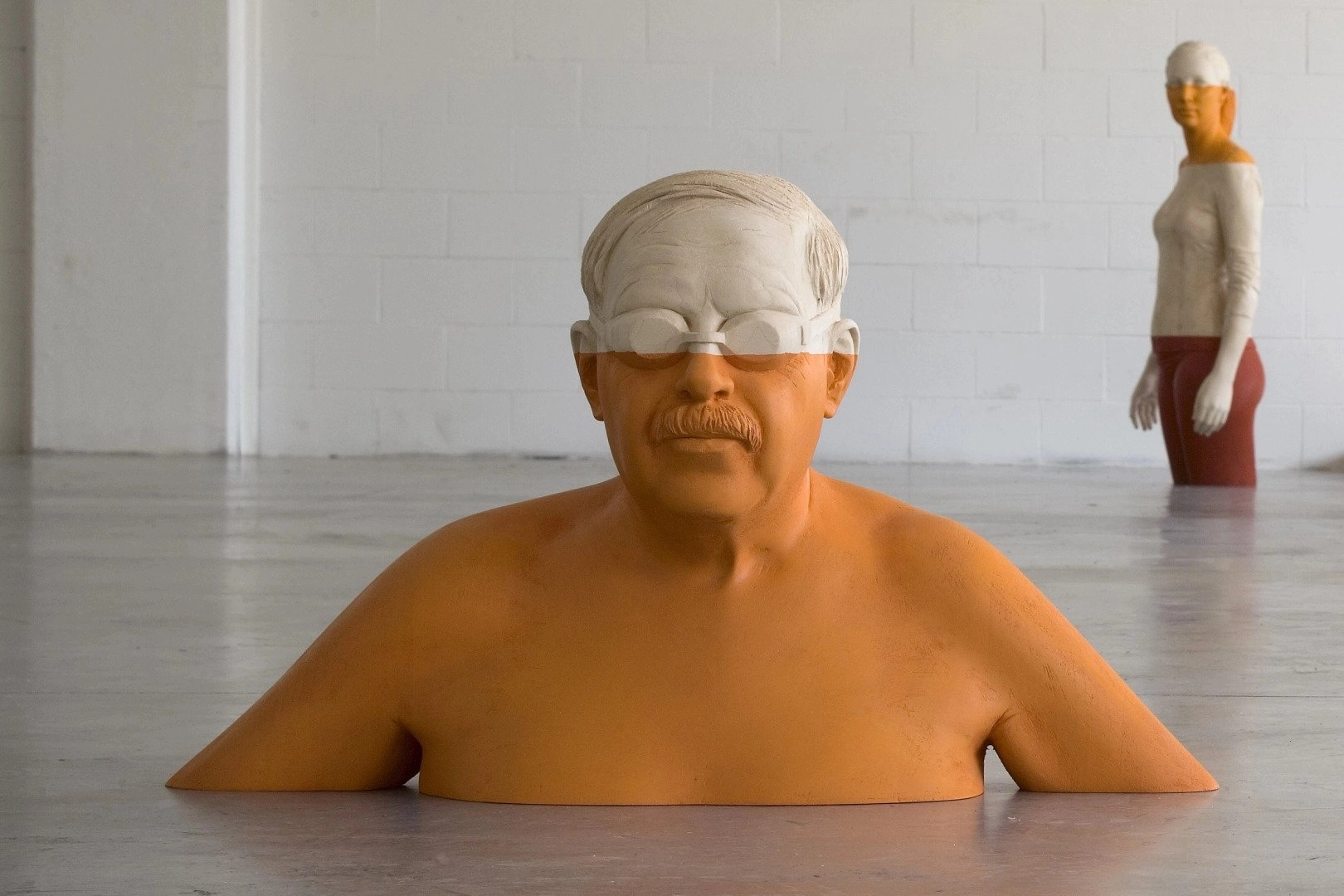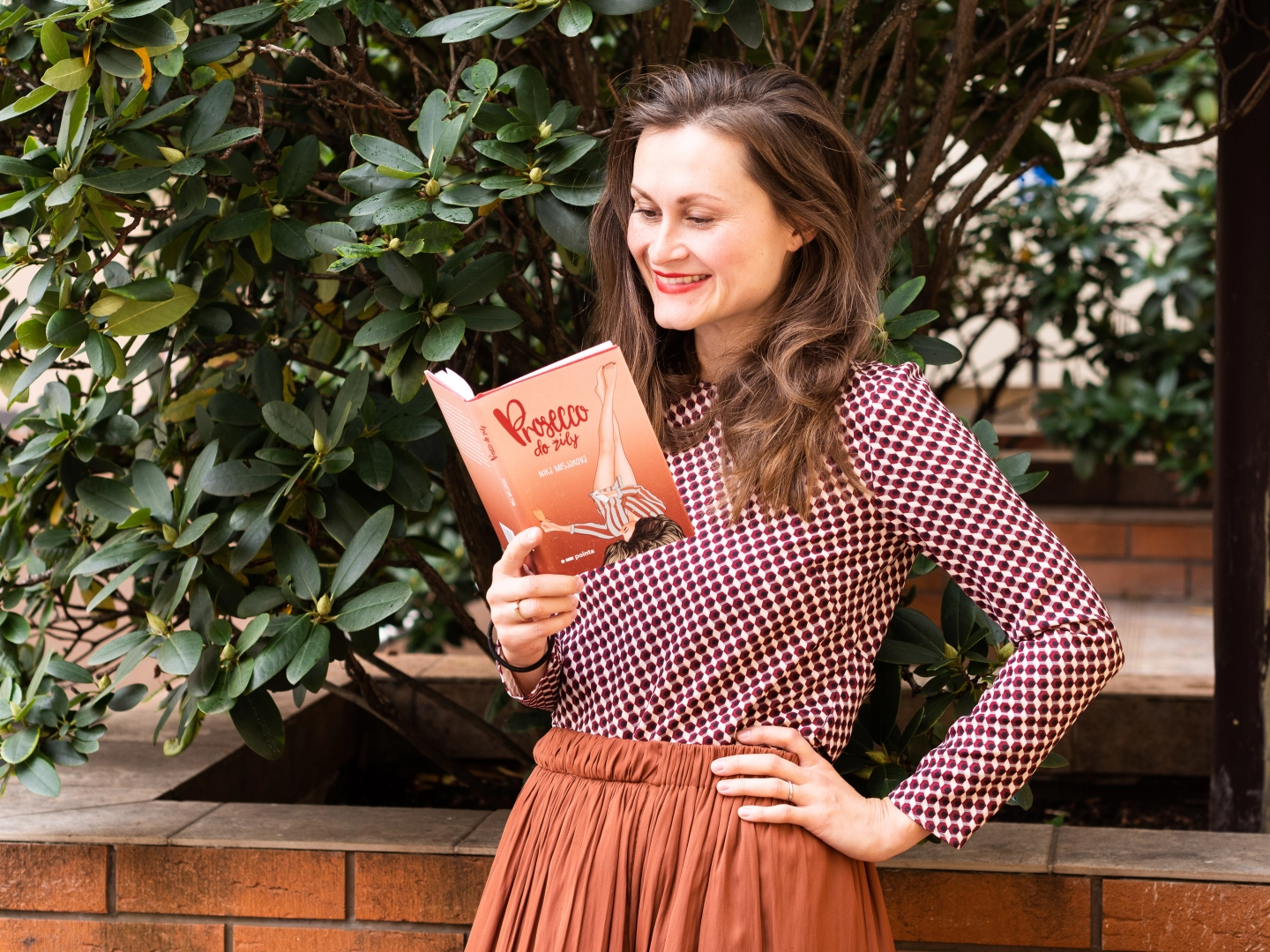Italian sculptor Willy Verginer and his realistic wood sculptures reflect on pressing environmental issues.
Wood has had a special place in his heart since childhood. He grew up in Val Gardena, which is nowadays a popular ski resort. In the Baroque period, however, it had a major role as the Italian and world capital of wood carving, then almost exclusively focused on religious subjects. Verginer's sculptures are a legacy of Italian skill, but his models and themes are purely profane. He complements his life-size, partially polychrome human figures with playful or disturbing details. The smooth surface of the skin is often in contrast with the rough texture of clothing bearing clear traces of chisels witnessing the artist's creative process and his search for the optimal shape of the matter.

Metamorphosis of body and environment
Verginer's origin has a major influence on his work. As he says himself, his work would have been quite different had he lived in a big city or a world metropolis. The beautiful nature of the Bolzano region in the Dolomites has given rise to his increased sensitivity to our surroundings and to how fragile our planet’s environmental balance is. The protection and sustainability of the environment and the study of the role of men as an integral part of nature are hence the core themes of his work.

Some of the sculptures seem to refer to the Virgil's Metamorphoses; leaves are sprouting from palms, branches growing from soles, flowers blossoming on the chest. The tips of the fingers are growing longer into mesmerizing bell-like blue gentians – rare protected alpine flowers. Who is the endangered species now?
Closed eyes, parts of the face missing or glasses that his sculptures often wear symbolize our voluntary blindness to the destruction and death of nature and turning a blind eye to trouble. On top of that, eyes are most significant bearers of emotions, which Verginer purposefully reduces to emphasize the deeper message of the each of the sculptures.
Swimming in garbage
Seemingly homogeneous colors are the result of meticulous layering of different tones, which together create the resulting effect. Verginer's original background is in painting, not sculpture, and he considers color a key aspect of his work. In his rendering, the paint evokes the water surface above which parts of the sculptures emerge or invisible pools of dirt from which a doe drinks.

He often complements the sculptures with metal barrels, kegs or cans, which sharply contrast with the fine texture of linden wood favored by the author for its lightness and softness. Woodpeckers peck holes in the dirty iron "trunk" made of a barrel, a girl and a boy are swimming among heaps of cans with an unmistakable color line just below the chin. Willy Verginer's take on an innocent sports theme taking up the form of a child wearing a bathing cap creates it a slightly frightening allusion, but at the same time the viewer isn't repelled; they're rather gently, in an unobtrusive way drawn into a quiet dialogue between tenderness and warning.



Willy Verginer (*1957) is an Italian sculptor creating realistic, life-size polychromatic wooden sculptures of real-life people. The key motives of his work are ecology and solutions to environmental issues. After studying painting at the Art Institute of Ortisei, he followed the tradition of the Val Gardena region and turned to wood carving. Later he taught at the Professional School of Sculpture of Selva. He's showcased his work at a number of exhibitions, and his works are included in the collections of world-famous modern art museums.








